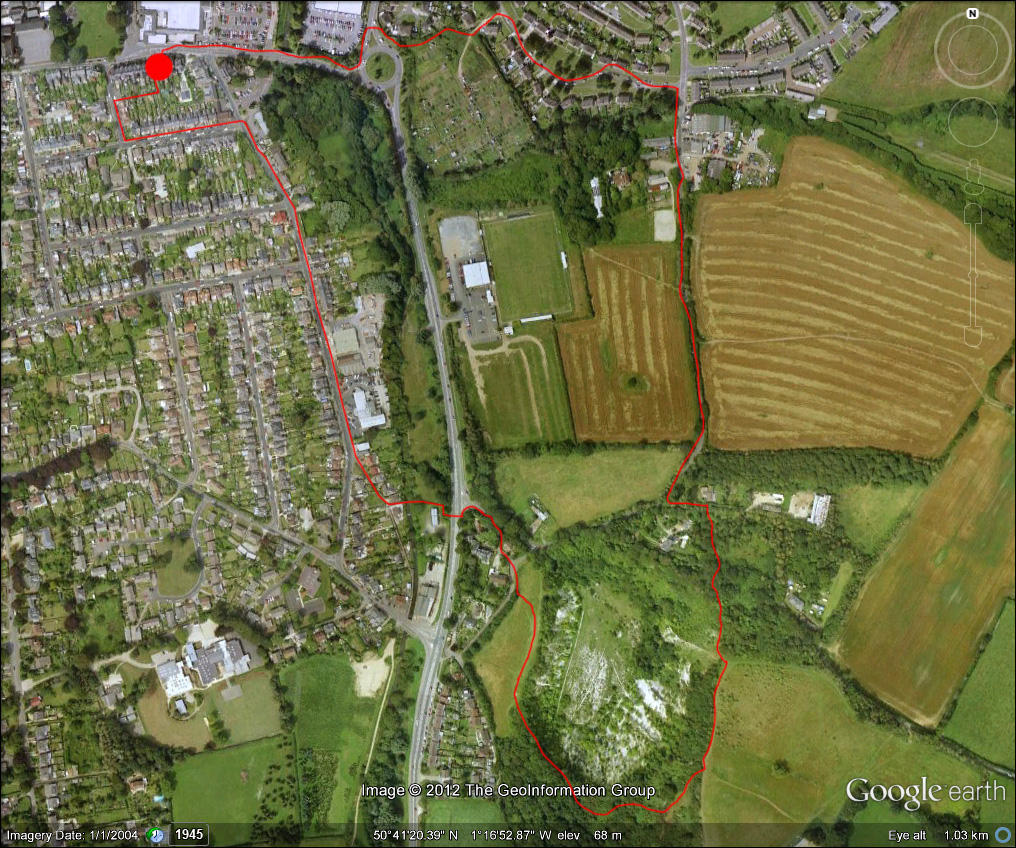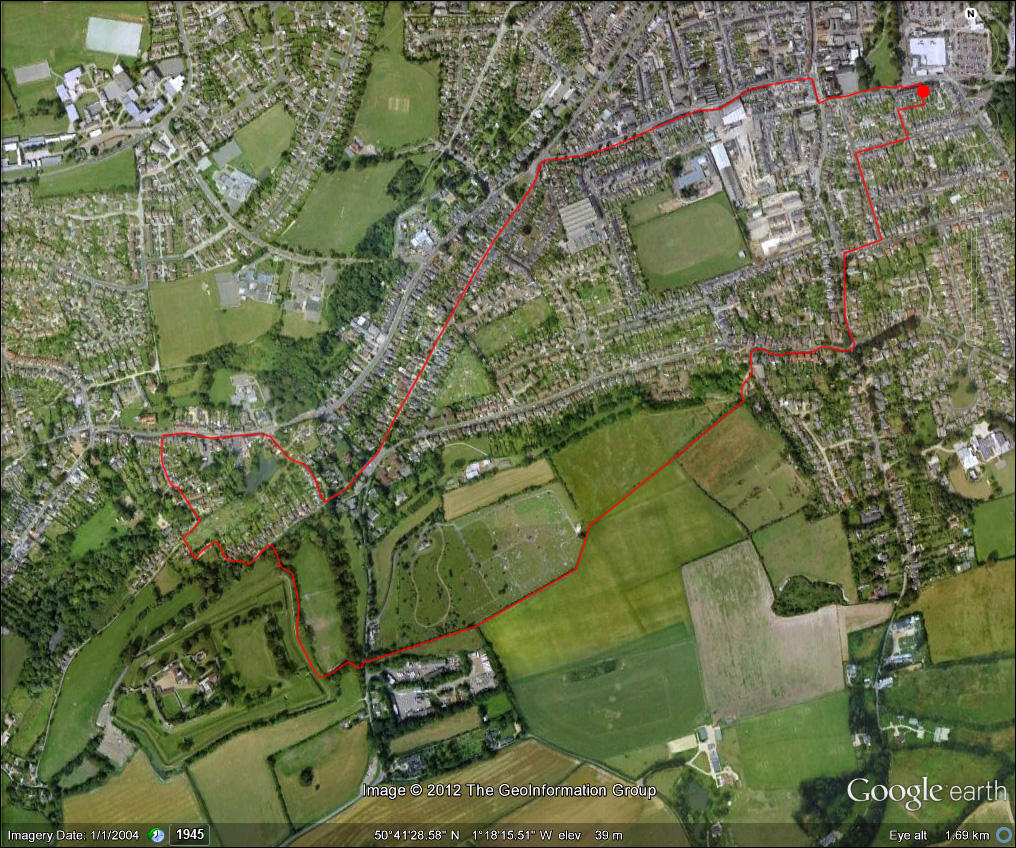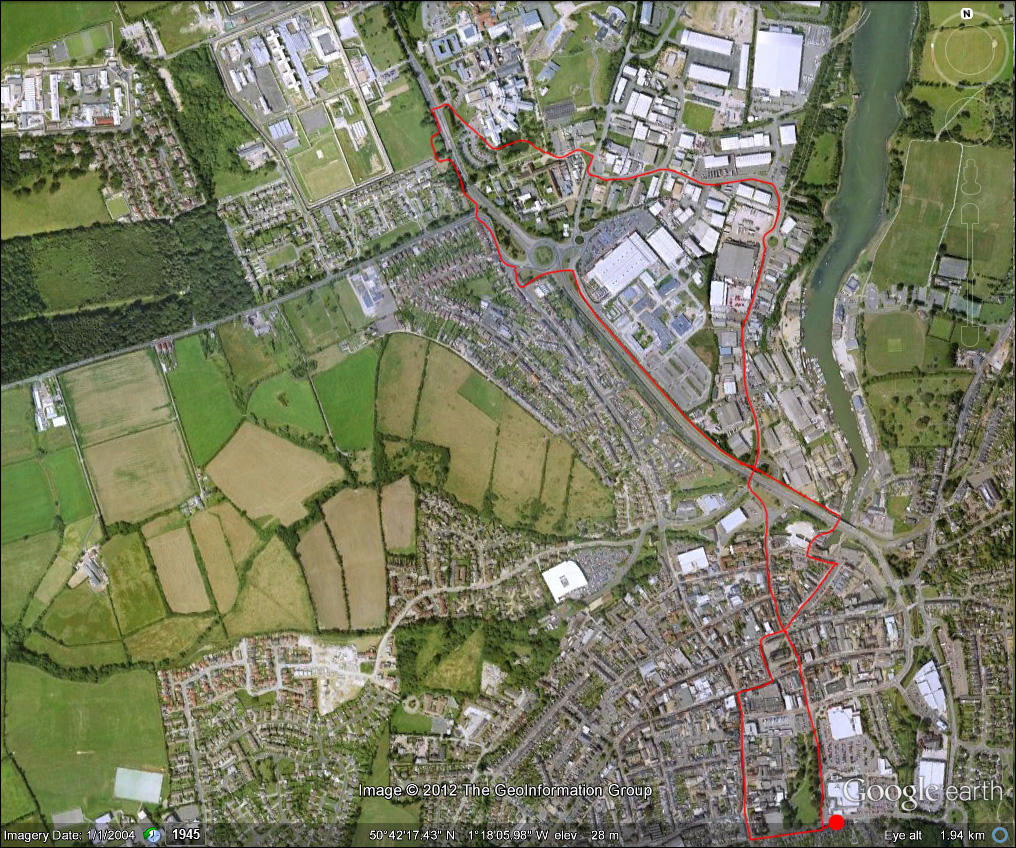So, Vectis is an artistic project. Its final outcome is intended to be a book. The subject of this book is the Isle of Wight. The methodology is psychogeography and the method is writing, drawing, photography and walking.
I've always had a suspicion that it's a bit dodgy to talk about 'methodology' when you're creating something purely artistic. It seems to have a whiff of a mis-appropriation of scientific terminology, implying something more rigorous than you ever really end up with in art. The term I would personally like to use in its stead is 'motive'; since methodology is the 'why' (opposed to the 'how' of method). Motive, to my mind, implies that even if the project is a failure, there might have been something interesting in its conception. It also allows you to potentially draw more terminology from the world of crime. Walking is part of my modus operandi.
But that's a digression. Why am I walking? Walking is actually at the heart of Vectis, and a particular sort of walking too, called flânerie (there's that French again), which deserves its own more in-depth post (and quite possibly a section of the finished book) somewhere down the line. For the moment, let us simply note that flânerie means 'strolling', that it is practiced by flâneurs, and that it refers to a somewhat romantic literary and artistic tradition that involves, to put it very crudely and simply, wandering around and looking at stuff. This is how I will accumulate much of the raw material that will, hopefully, come to comprise the finished work.
Let's roll back to the genesis of Vectis. I first started thinking about Vectis in 2010, after attending a screening of Patrick Keiller's film London. This was the first time I had ever seen Keiller's work, though I knew something of the tradition which it belonged, and I found the film a very interesting and inspiring piece of work. London is the first in a trilogy of films known as the 'Robinson Trilogy', consisting of London, Robinson in Space and Robinson in Ruins. There's a lot of interesting things about the name Robinson, Daniel Defoe, imperalism and armchair travel that we'll save for a later date, but it goes without saying that the unseen, unheard central character's name is important. The films consist of footage from locked cameras and narration from two characters, talking about Robinson, an eccentric left-wing academic, and his journeys across first London and then the entirety of England, exploring their 'problem', which is multifaceted: social, economic, political, epistemiological and environmental. London, particularly, is organised around several different walks that Robinson and his friend undertake, with each walk being an excuse for Robinson to explore and expound upon a different aspect of London. This was the core of my inspiration for how I wanted to write about the Isle of Wight.
The other obvious methodological antecedent, as I have mentioned before, is Iain Sinclair. Particularly with Sinclair I am thinking of his book London Orbital, which I shall be re-reading, expanding my notes on and writing about on here sometime in the next couple of weeks. Essentially, London Orbital records an epic series of walks around London's circling M25 Motorway, some of which are almost heroically difficult to undertake, using this as a vehicle to explore and talk about London. This book and Sinclair's poem Lud Heat cover all the bases in regards to modern psychogeography, mixing together flânerie, poetry, occultism and reportage into a heady stew that has an undeniable influence on Vectis. I should like to point out, by the way, that despite what might possibly have been intimated in the section of the book I've put up so far, I think Sinclair's work is very good and very interesting, I just disagree with the broad tradition to which he belongs. Otherwise, of course, I wouldn't be using him as an inspiration, but you know.
So then, between Keiller and Sinclair, we have the basis for the walking that is at the heart of Vectis. There are three planned stages of walking. Each will involve a different method of recording and engaging; I will be testing out and refining these methods over the next month or so. Each of the three stages is divided into a number of walks. The routes of these walks have not been exactly finalised; below I will lay out the routes of the three first stage walks, as they currently stand (they tend to change a bit on the day, depending on my whims).
Walk 2 - Graveyard/Castle:
Walk 3 - Hospital/Prison:
A few notes on these walks: I notice that, as I come to draw them out on the maps above, I have completely misjudged their relative lengths. In my mind, Walk 3 is the shortest, despite the zoom level of the above picture clearly indicating otherwise, and Walk 1 is the same length as Walk 2, despite it being almost certainly shorter (again, the zoom levels). I wonder if this has anything to do with the level of urbanisation on each walk (Walk 3 is entirely urban) or whether it's simply a matter of the amount of effort involved in each walk. Walk 3 basically follows the Medina valley and is fairly flat, whilst 2 and 3 both include some quietly murderous hill climbs.
Stage 1: Newport
Walk 1 - Chalk Pits/Burnt House Lane:Walk 2 - Graveyard/Castle:
Walk 3 - Hospital/Prison:
A few notes on these walks: I notice that, as I come to draw them out on the maps above, I have completely misjudged their relative lengths. In my mind, Walk 3 is the shortest, despite the zoom level of the above picture clearly indicating otherwise, and Walk 1 is the same length as Walk 2, despite it being almost certainly shorter (again, the zoom levels). I wonder if this has anything to do with the level of urbanisation on each walk (Walk 3 is entirely urban) or whether it's simply a matter of the amount of effort involved in each walk. Walk 3 basically follows the Medina valley and is fairly flat, whilst 2 and 3 both include some quietly murderous hill climbs.
The first stage will involve recording through a combination of text and illustrations. These illustrations will be based on photography, but seperate from the image and the walks will be (indeed, have, I've walked each general route at least three times already) conducted during Summer. These are local walks on routes I know well, chosen by no solid criteria other than my personal preferences, with my current home (which soon won't be, more on that some other time) as their start and end point.
I will talk about the other stages in more detail at some other time, but Stage 2 will push out from Newport along the abandoned railways to Shanklin, Freshwater and Cowes, and Stage 3 will be an Iain Sinclair style circumnavigation of the coast in six sections. Stage 2 will be autumnal, and recorded through intermingled image and text. Stage 3, conducted in winter, will be purely image based. Levels of iconicity will shift as levels of choice change and it should all be quite interesting, hopefully.



No comments:
Post a Comment